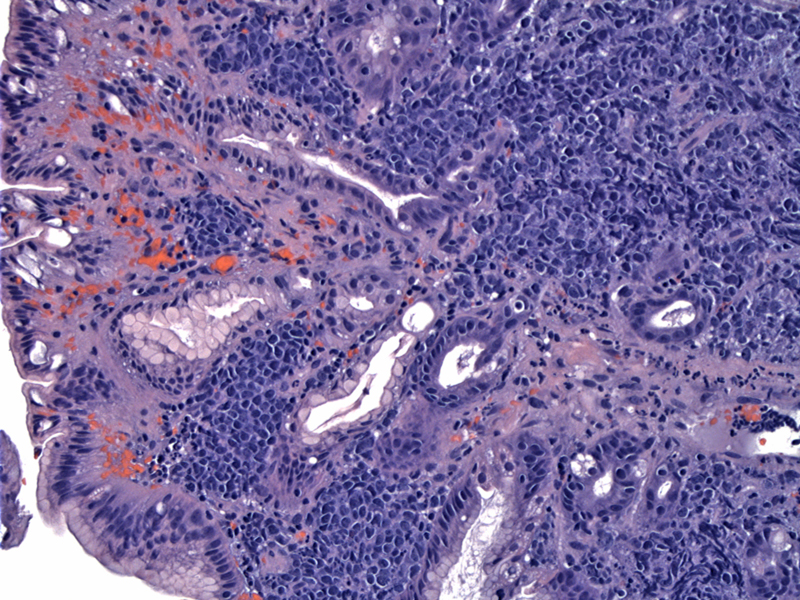System: Gastrointestinal: Stomach: Neoplastic: Large B cell lymphoma

System: Gastrointestinal: Stomach: Neoplastic: Large B cell lymphoma



The lamina propria contains aggregates of large cells with scant cytoplasm between glands.
Cells are large with a fair degree of pleomorphism. The morphologic and immunohistochemical findings indicate a high grade B-cell lymphoma with features intermediate between diffuse large B-cell lymphoma and Burkitt lymphoma (WHO criteria 4th ed. 2008). Although the immunophenotype alone could be compatible with Burkitt lymphoma, the cytologic features are not a good fit.
Ki-67 marks almost all the cells indicatve of a extremely high proliferative index.
CD20 highlights the malignant cell population confirming the B-cell nature of the cells.
bcl 6 Image
Diffuse large B-cell lymphoma (DLBCL) of the stomach is an aggressive lymphoma that might arise de novo or from MALT lymphoma transformation. Foci of DLBCL may be observed in MALT lymphomas but the extent of the high-grade component varies from a small proportion to a dominant large cell component. DLBCLs with germinal center-like phenotype (bcl-6 negative and CD10 positive and a proportion bcl2 positive) do not arise from transformed MALT lymphomas Transformed MALT lymphomas are CD10 and bcl-2 negative and bcl-6 positive). Differentiation between transformed MALT and de novo DLBCL is not clinically relevant anyway, since the two behave similarly.
The role of H. Pylori infection is controversial.
These tumors occur more frequently in males, with median age range of occurrence of 50–60 years. Presentation is often similar to gastric cancer. The majority of patients complain of epigastric pain or weight loss.
Treatment is Rituximab plus Anthracycline-based combination chemotherapy. H. pylori eradication with antibiotic therapy should also be employed, especially in cases with concomitant low-grade MALToma.
Psyrri A, Papageorgiou S, Economopoulos T. Primary extranodal lymphomas of stomach: clinical presentation, diagnostic pitfalls and management. Ann Oncol. 2008 Dec;19(12):1992-9.